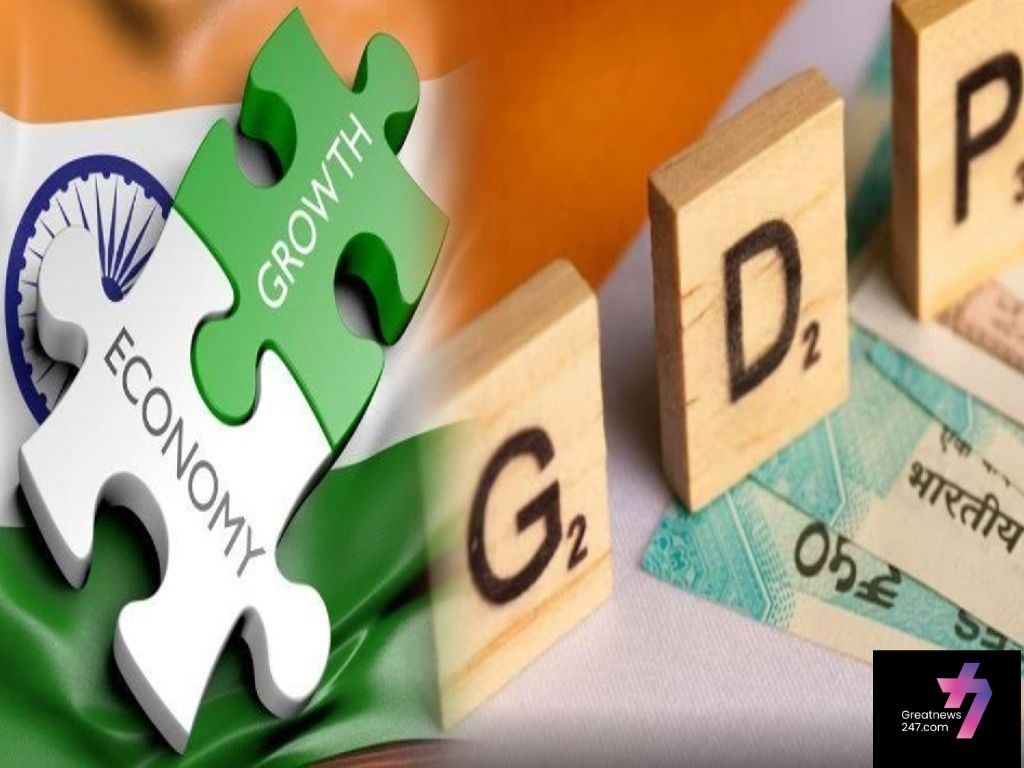India’s GDP Growth Moderates to 6.7% in Q1 2024-25, Marking the Slowest Pace in Five Quarters
India’s economic growth has shown signs of deceleration, with the country’s GDP expanding at a rate of 6.7% in the first quarter of the fiscal year 2024-25. This marks the slowest growth rate in the past five quarters, reflecting a moderation in economic momentum after a period of more robust expansion. The latest figures have prompted a renewed focus on the factors influencing the slowdown and the potential implications for the broader economy.
Economic Context and Growth Trends
The GDP growth rate of 6.7% for Q1 2024-25 represents a noticeable decrease from the previous quarters. Over the last year, India had experienced relatively higher growth rates, often surpassing 7% in earlier quarters. This recent moderation suggests a shift in economic dynamics, influenced by both domestic and international factors.
Several factors contribute to this slowdown. On the domestic front, challenges such as fluctuating consumer demand, investment slowdowns, and sectoral performance issues have played a role. Internationally, global economic uncertainties, including fluctuating commodity prices and geopolitical tensions, have also impacted economic performance.
Sectoral Contributions and Economic Activity
The moderation in GDP growth has been attributed to varying performances across different sectors of the economy:
1. Industrial Sector: The industrial sector has faced challenges, including supply chain disruptions and fluctuating global demand. Manufacturing and mining activities have been less robust compared to previous periods, impacting overall industrial output.
2. Services Sector: The services sector, traditionally a strong performer for India, has shown mixed results. While some service industries, such as IT and financial services, continue to perform well, others have struggled with lower growth rates.
3. Agriculture Sector: The agricultural sector’s performance has been relatively stable, but it has not been enough to offset the slower growth in other sectors. Factors such as monsoon variability and crop production issues have had localized effects.
Consumer and Investment Dynamics
Consumer spending, a significant driver of economic growth in India, has seen some moderation. Rising inflation, coupled with higher interest rates, has impacted consumer purchasing power and spending patterns. Additionally, investment growth has slowed, with businesses displaying caution in expanding capacities or investing in new projects amid economic uncertainties.
Government and Policy Responses
In response to the slowdown, the Indian government and central bank are expected to undertake various measures to support economic growth. These may include:
1. Monetary Policy Adjustments: The Reserve Bank of India (RBI) may adjust monetary policy to address economic conditions, potentially influencing interest rates and liquidity to stimulate economic activity.
2. Fiscal Stimulus: The government may consider fiscal stimulus measures to boost demand and support key sectors. This could include increased public spending on infrastructure projects or targeted support for industries facing difficulties.
3. Structural Reforms: Continued focus on structural reforms aimed at improving ease of doing business, boosting investment, and enhancing sectoral efficiencies may be a priority.
Implications for Future Growth
The moderation in GDP growth has implications for India’s economic trajectory. While a slowdown to 6.7% is still a relatively strong performance compared to global standards, it highlights underlying challenges that need to be addressed:
1. Economic Stability: Ensuring economic stability and sustained growth will require addressing sectoral weaknesses and maintaining investor confidence.
2. Policy Focus: Policymakers will need to carefully navigate between stimulating growth and managing inflationary pressures. Effective coordination between fiscal and monetary policies will be crucial.
3. Global Factors: Global economic conditions, including trade dynamics and geopolitical developments, will continue to influence India’s economic performance.
Public and Market Reactions
The latest GDP figures have elicited a range of responses from economists, market analysts, and policymakers. While some view the slowdown as a natural phase in the economic cycle, others express concern about the sustainability of growth and the potential need for stronger policy interventions.
Investors and market participants will be closely monitoring economic indicators and policy responses to gauge the outlook for India’s economy. The reaction of financial markets and business sentiment will be critical in shaping expectations for future economic performance.
India’s GDP growth of 6.7% in Q1 2024-25, while reflecting a deceleration from previous quarters, remains a significant achievement in the context of global economic uncertainties. The moderation highlights both the resilience of the Indian economy and the need for targeted actions to address emerging challenges. As India navigates this period of slower growth, a balanced approach to economic policy and structural reforms will be essential in sustaining long-term growth and development.

